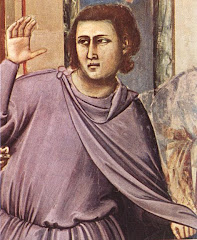



The Treaty of Waitangi, signed on 6 February 1840, is the founding document of New Zealand.
The Signing of the Treaty
The Treaty of Waitangi was first signed at Waitangi on 6 February 1840. It represented an agreement between the British Crown and over 500 Māori chiefs of New Zealand.
There are a number of reasons why a treaty was seen to be needed. These included the increasing lawlessness of traders and settlers so there needed to be some form of governance, and the interest of other countries such as France and America in colonising New Zealand. The Crown recognised New Zealand as an independent nation after the signing of the Declaration of Independence (1835); so any issues regarding governance needed the agreement of Māori.
This agreement took the form of the Treaty.
Waitangi Day
Approximately 45 Māori chiefs signed the Treaty at Waitangi on 6 February 1840. It was then taken to further meetings in the north, before several copies were made and distributed throughout the country to collect further signatures. This process took six months.
Although we commemorate Waitangi Day with a public holiday today, it was not always recognised as such. While annually marked and celebrated as a significant date in the history of New Zealand, Waitangi Day was not declared a public holiday until 1974, when it became known as New Zealand Day. The name was changed back to Waitangi Day in 1976 to honour the significance of the Treaty itself.
Traditionally, the Prime Minister, high-ranking government officials, and often the Leader of the Opposition attend celebrations at the Waitangi. However, in past years protests over the Treaty and subsequent Waitangi Tribunal claims have often meant that senior officials celebrate elsewhere.
The Signing of the Treaty
The Treaty of Waitangi was first signed at Waitangi on 6 February 1840. It represented an agreement between the British Crown and over 500 Māori chiefs of New Zealand.
There are a number of reasons why a treaty was seen to be needed. These included the increasing lawlessness of traders and settlers so there needed to be some form of governance, and the interest of other countries such as France and America in colonising New Zealand. The Crown recognised New Zealand as an independent nation after the signing of the Declaration of Independence (1835); so any issues regarding governance needed the agreement of Māori.
This agreement took the form of the Treaty.
Waitangi Day
Approximately 45 Māori chiefs signed the Treaty at Waitangi on 6 February 1840. It was then taken to further meetings in the north, before several copies were made and distributed throughout the country to collect further signatures. This process took six months.
Although we commemorate Waitangi Day with a public holiday today, it was not always recognised as such. While annually marked and celebrated as a significant date in the history of New Zealand, Waitangi Day was not declared a public holiday until 1974, when it became known as New Zealand Day. The name was changed back to Waitangi Day in 1976 to honour the significance of the Treaty itself.
Traditionally, the Prime Minister, high-ranking government officials, and often the Leader of the Opposition attend celebrations at the Waitangi. However, in past years protests over the Treaty and subsequent Waitangi Tribunal claims have often meant that senior officials celebrate elsewhere.













































No comments:
Post a Comment